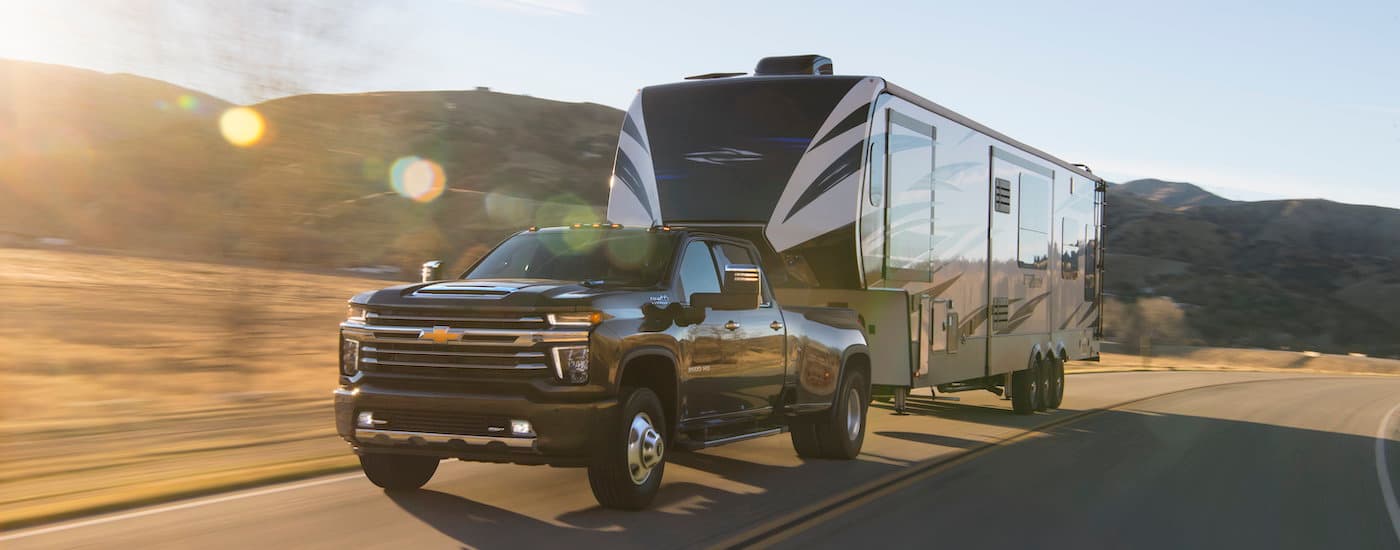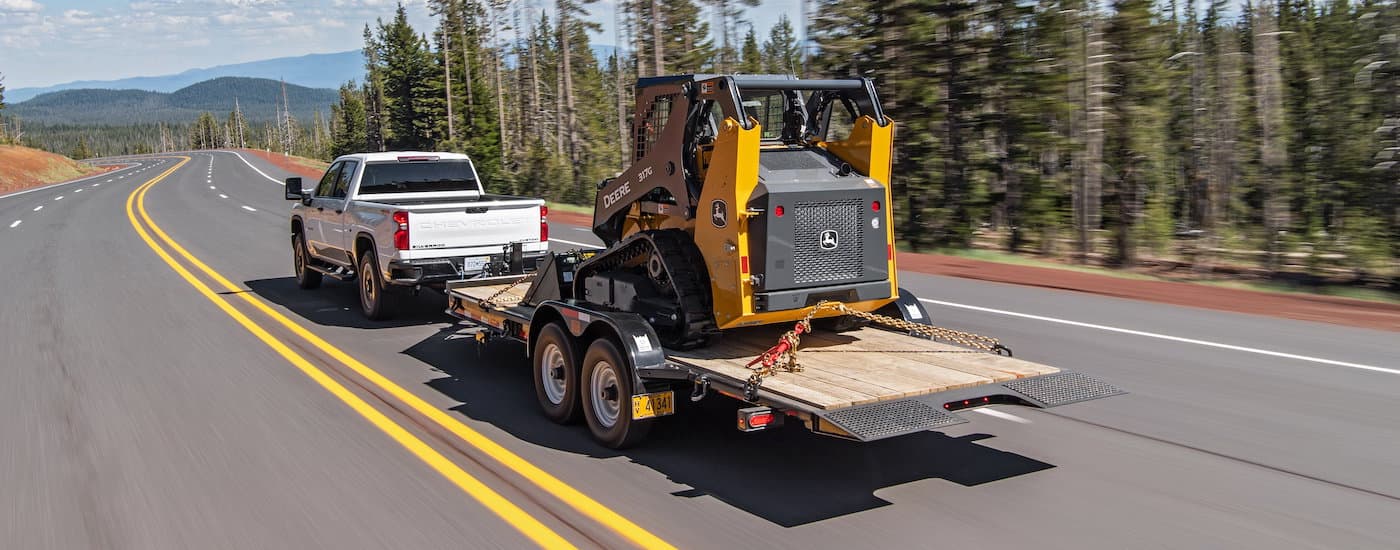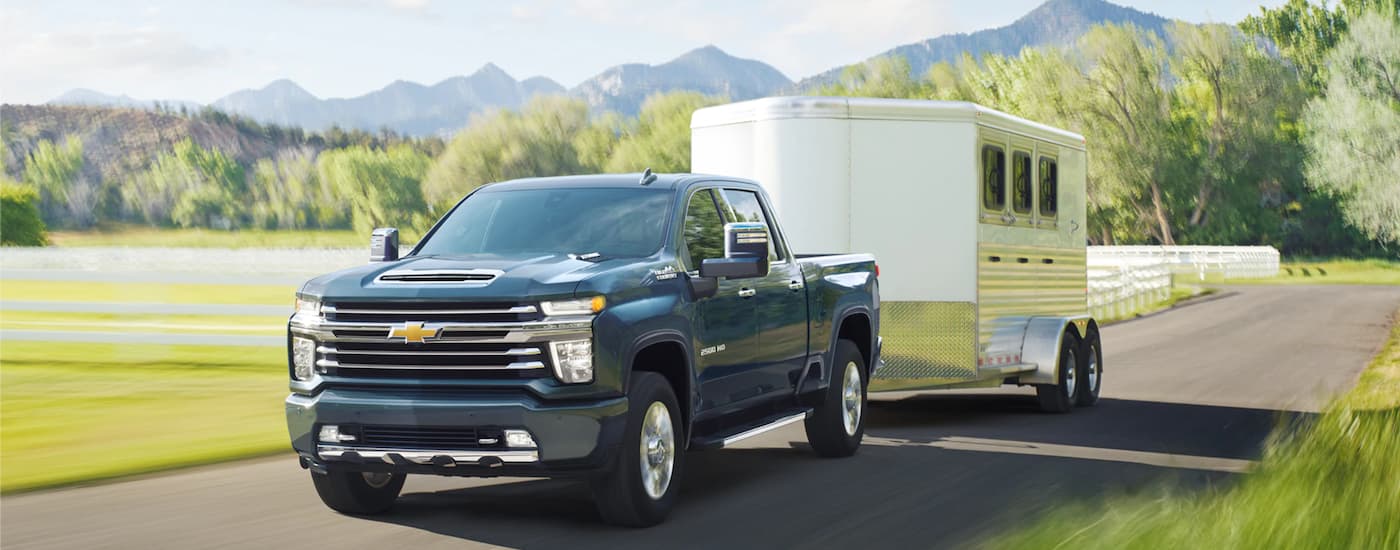What a One-Ton Truck Really Hauls and How to Choose the Right Truck
Anyone who has ever wondered about the names given to truck sizes may have noticed a discrepancy between the numbers. You might think to yourself, “I’ll go to a used truck dealer near me and find a truck for some jobs I need to do.” But then you’re confronted with seemingly nonsensical numbers and a long line of trucks with varying capability that easily gets confusing. You’ll find pickups called half-ton, three-quarter-ton, and one-ton, but none of those numbers match anything about the trucks they identify. It’s clearly not related to the weight of the truck itself, and it isn’t how much it tows. This breeds the question, why do they call a truck a one-ton? The answer is both simple and complex.
Historic Names for Modern Pickups
Decades ago, trucks were identified with numerical titles that once coincided with how much payload they could haul. This has been a practice since the first trucks were produced back in the early 1900s, but it was also part of freight standards even when wagons were pulled by horses. Early trucks were built with the specific capacity for hauling freight according to tons, which was considered an attractive part of selling motorized vehicles to people or businesses. It was easy to identify a truck’s capability by the number of tons it could haul, and then it would be easy to buy the truck you needed for the amount of freight you wanted to move.
Trucks were later adopted by the military during the World Wars, and an attempt to standardize truck capacity was established to try to keep truck use simplified. Though that worked for a while, when the wars ended and trucks became popular as personal vehicles, automotive manufacturers began to shift the standards. Pickups changed in their capacities, with modern engines becoming more powerful, and innovations took hold. In the 1950s, trucks were given numeric identifiers to denote the classification of the truck’s capability, but the classification was more closely associated with a new designation of light-duty and heavy-duty.
For instance, starting in 1959, Chevy used 10, 20, and 30 in the names of its C/K trucks to designate the half-ton, three-quarter-ton, and one-ton capacity, but even in 1959, the trucks no longer hauled a payload matching the name of the truck. By then, the public was used to the names being designated to tonnage a truck could haul, so motor vehicle producers chose simple numbers to identify the trucks, most likely to avoid confusion, but the reasons are lost to history. It became easier to identify a truck as a 10 or 20 to indicate its capability range, rather than trying to make sense of the payload capacity that could change yearly with new engine innovations.
Today’s Chevy trucks are now categorized as the Silverado 1500, 2500, 3500, and so on to indicate the relevant level of light-duty or heavy-duty. When a Silverado is designated as a “one-ton,” it no longer indicates its capacity in terms of payload but is instead a carry-over of the titles once used when that was true. Now, a one-ton Silverado is more likely to be able to haul a payload that can exceed three tons, depending on the size of the cab, bed length, and engine capacity. If this all seems very confusing, don’t feel bad. A lot of people don’t really understand how the truck names and their corresponding numbers got so garbled, but keep reading. We’ll explain payload and GVWR so the classifications will make more sense.
Payload and What It Means
In order to understand how to arrive at a truck’s payload capacity, we have to start with the GVWR, which stands for gross vehicle weight rating. Calculating GVWR requires knowing a vehicle’s weight and then adding how much a truck can carry according to a combined rating of specific components. The axles, wheels, tires, suspension system, truck frame, bed length, and cab size are just an overview of the components that provide the means for calculating the GVWR. When all of the components of a vehicle come together in combination, they are capable of holding a certain amount of weight, which includes the weight of the truck itself.
Part of the calculations must include the engine’s capacity for moving the weight of the vehicle, which is why engine options are often part of the difference in payload capacity when it changes from one truck to another. Typically, however, the engine size is more closely related to how much a vehicle can tow rather than how much it can haul in the bed and cab. This is because a vehicle rating for how much it can hold on top of its suspension, wheels, tires, axles, etc, relates directly to the strength of the frame as a whole. A truck cannot safely carry more weight than the frame can withstand. When a truck is built with high-strength steel, for instance, this means it will be durable and more likely to hold higher amounts of weight placed on top of its frame.
GVWR is calculated by taking into account the weight a truck’s frame can handle, including all the fluids required for proper operation (like fuel, oil, transmission fluid, etc.), plus whatever capacity the frame has to carry any extra weight beyond the weight of its own structure. Once this measure is calculated, a payload capacity is found by taking the curb weight of a vehicle and subtracting it from the GVWR. Curb weight is simply the weight of the vehicle itself, nothing more. It’s important to understand that the payload capacity of any truck includes the weight of the people who sit inside the cab, the weight of any cargo placed in the cab, and any cargo hauled in the truck bed.
Payload is the sum total of all weight placed into or on top of a vehicle beyond the vehicle’s own weight, which will mean calculating tongue weight when towing a trailer. Fortunately, most vehicles stamp the payload capacity inside a vehicle’s door jamb on the driver’s side. Search for a placard or sticker that says “payload” or a phrase relating to weight not to be exceeded. As evidenced by the historical measure of tonnage a truck could carry, the actual payload will certainly exceed the half-ton, three-quarter-ton, or one-ton capacity a pickup truck’s name implies. Again, the increase in payload has occurred over many decades of improvement in materials, engineering, and design that has continued to enhance the overall structure of trucks today.
Light Duty and Heavy Duty
While we still hear the terms half-ton or one-ton as identifiers for pickup trucks, it’s clear now that these are misnomers. Trucks can far exceed those payload weights in today’s world, often by thousands of pounds. A typical half-ton truck, which is often designated with a 1500 in its name, can have a GVWR of over 7,000 pounds. Subtracting the curb weight from this massive GVWR reveals the payload, which can be well over 2,000 pounds. Just in the last five years alone, payloads have increased by several hundred pounds for most half-ton trucks, putting payload capacity around the one-ton mark. The same is true of one-ton trucks, which are typically designated with the 3500 after the truck’s name, and now have payloads rising above 7,000 pounds.
Here is why the newer designations of light-duty and heavy-duty become an easier way to determine a truck’s capability, which so rapidly shifts in the market from year to year. Trucks with the light-duty denotation are considered the 1500 trucks. For personal use, a truck is usually considered heavy-duty once it hits the 2500 and 3500 range, which falls into the medium-duty range for commercial vehicles. For shopping purposes at a Chevy dealership, when asking about a one-ton truck, that means you’re asking about a Silverado 3500 HD. A three-quarter-ton truck is a Silverado 2500 HD, and a half-ton truck is a Silverado 1500. The Silverado 3500 HD and 2500 HD are both heavy-duty models, and the 1500 is a light-duty vehicle. Now you know how to ask for the right truck when you shop and what each truck rating really means.





